

Located at the western edge of Missouri, Kansas City's underworld appears to have been influenced by Mississippi River port city St. Louis, about two hundred miles to the east, and by the cities of Milwaukee and Chicago to the northeast. In its early days, the Kansas City Mafia may have consisted of several independent clans operating in North Side Sicilian neighborhoods. These were dominated by immigrant Mafiosi from southwestern portions of Palermo province and nearby communities in the province of Agrigento. There are little more than hints of Mafia existence from 1890 through 1910, when a Black Hand extortion group made its presence felt. The local criminal society of the period became known as "The Black Hand." Through the Prohibition Era, consolidation occurred, and a Mafia partnership assembled beneath the cover of the Kansas City political machine. Mafia leadership succession before about 1950 is not entirely clear. Mafia leaders may have concealed themselves behind political figures working with the Pendergast political machine. Kansas City's organized crime network eventually eclipsed that of St. Louis and expanded its influence southward and westward as far as Texas and Nevada. According to federal officials, the Kansas City underworld became a key distribution point for illegal narcotics in the United States.
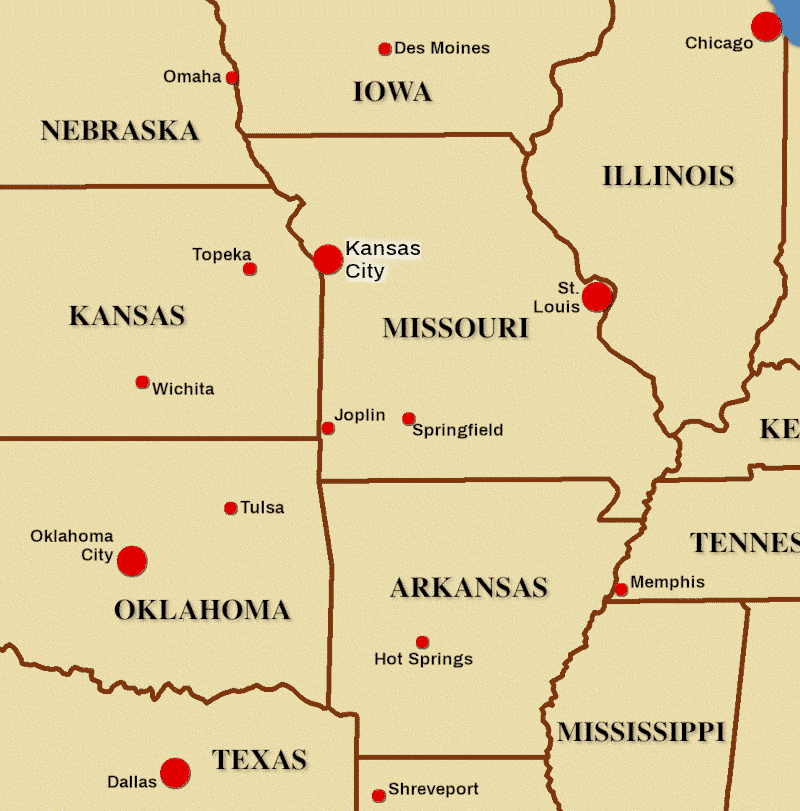
Kansas City and region
c1903 - Paolo DiGiovanni (Born April 15, 1875, in Chiusa Sclafani, Sicily. Died Aug. 27, 1929, in Kansas City.) Grocery owners, the DiGiovanni brothers were also recognized as leaders of a Mafia organization transplanted from their native town of Chiusa Sclafani, Sicily, at the southern end of Palermo province. Residents of the Kansas City area since the early 1900s, they were headquartered at Campbell Street, near North Side railroad lines and the Missouri River. Paolo DiGiovanni was regarded as chief among the brothers, though for some years he appears to have traveled in the South and the Midwest, where he had strong connections in Chicago.
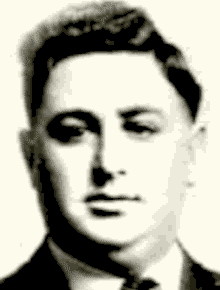
Balestrere
1908 - James Balestrere (Born June 24, 1891 in Bagheria, Sicily. Died Oct. 19, 1959, in Kansas City.) A relative of the Balestrieri family, underworld leaders in Milwaukee, Wisconsin, James Balestrere first moved into the Kansas City area in summer 1908. Originally from Bagheria, Sicily, close to the City of Palermo, it is unlikely that he was initially part of the DiGiovanni Mafia, which was rooted in Chiusa Sclafani. Balestrere settled on Troost Avenue, five blocks east of the DiGiovanni headquarters on Campbell Street, and worked as a grocer and stone mason.
1920 - During the Prohibition Era, Balestrere was described as a DiGiovanni partner/top lieutenant in bootlegging-related rackets. As Mafia organizations consolidated over the course of the following decade, Balestrere grew in importance. He became leader of the North Side Democratic Club and gained considerable political influence through the local Pendergast machine. There are strong indications that Balestrere, operating alongside the DiGiovanni brothers, directed Sicilian racketeers in the region through a screen provided by politician partners.
Paolo DiGiovanni was identified as the early Prohibition Era Mafia boss of Kansas City in the 1963 memoirs of Nick Gentile. However, later Gentile comments in that document suggest that Paolo was not the only boss in the city. Gentile may have used the boss designation casually to refer to those in leadership positions rather than to indicate the single head of an underworld hierarchy.
Who Was Who: "Balestrere, James (1891-1959)."
1923 - Anthony Ferrantelli (Born Oct. 23, 1876, in Burgio, Sicily. Died Oct. 6, 1951, in Kansas City.) The memoirs of Nick Gentile identified Ferrantelli (calling him Ferrentello) as a Mafia leader in Kansas City. Ferrantelli, originally from Burgio in the Sicilian province of Agrigento, may have led a faction within the DiGiovanni Mafia or an independent clan allied with the DiGiovannis. Burgio is a neighbor-municipality to the Chiusa Sclafani hometown of the DiGiovannis, making a partnership with the DiGiovannis seem more likely than independence from the brothers. Ferrantelli partnered with Frank LaRocca in a macaroni business on East Fifth Street. In the Prohibition Era, he opened a barber supply company, giving him access to quantities of alcohol. Nicola Gentile (1884-c1970) also became a leader of this Ferrantelli faction from about 1923 to 1925, at Ferrantelli's invitation. Gentile's role - generally described as "boss" - was probably less powerful than that title suggests. (There is no indication that Gentile was a superior to established local crime figures like the DiGiovannis.) Gentile apparently served as representative of Kansas City underworld interests at the interstate gatherings of U.S. mafiosi.
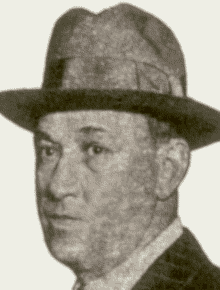
DeMayo
1925 - Frank DeMayo (Born April 2, 1885, near Naples, Italy. Died Aug. 2, 1949, in Kansas City). Some have stated that "bootleg king" DeMayo - originally "Demaio" - served as a Mafia boss during Prohibition. This appears to be incorrect. Though he had some shared interests with mafiosi and their political allies, DeMayo, a native of the Naples area of Italy, seems to have led his own large, diverse and well connected rum-running gang with a territory that included parts of Missouri, Kansas and Oklahoma. DeMayo was brought to the U.S. as a child and grew up in Kansas City. As a young adult, he was involved in prizefighting before moving on to underworld gambling ventures and nightclubs. As Prohibition arrived, he became a specialist in transporting liquor across the U.S. Southwest.
1928 - In spring 1928, after several trials that ended with hung juries, he was finally convicted of Prohibition violations and sentenced to two years and a $10,000 fine. An additional conviction and prison sentence followed in summer - for transporting liquor into the federally administered Oklahoma "Indian territory." He began his prison sentence at Leavenworth in March 1929 and was transfered to Atlanta prison in 1930. In his absence, DeMayo lieutenants, including Celestine T. "Bud" Tralle and Guy Brock, formed their own bootlegging rings.
1928 - Joseph Filardo (Born Aug. 10, 1898, in Castelvetrano, Sicily. Died Aug. 29, 1985, in Kansas City.) and relatives in the Cusumano family appear to have led a Sicilian underworld faction in the late Prohibition Era. Filardo, originally from Castelvetrano in Trapani Province, founded and operated the Roma Bakery on Independence Avenue and had access to supplies (sugar, yeast) and equipment useful to moonshine operations. During 1928, Filardo also ran one of a series of Italian wholesale groceries along East Fifth Street. His was located at 1200 East Fifth. West of there sat the groceries of James Balestrere, Frank LaRocca and the DiGiovannis. Decades later, Filardo and Joseph Cusumano were linked with the underworld organization run by Nick Civella.
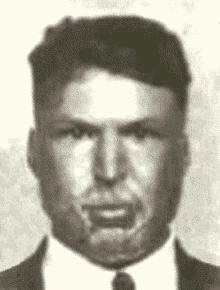
J. DiGiovanni
1929 - Joseph DiGiovanni (Born April 23, 1888, at Chiusa Sclafani, Sicily. Died Aug. 5, 1971, at Kansas City, MO.) Following the death of Paolo DiGiovanni of natural causes in the summer of 1929, his brother Joseph DiGiovanni emerged as the leading figure of the Chiusa Sclafani Mafia in Kansas City. Joseph was sometimes referred to in the press as "Scarface." This nickname was the result of very visible reminders of serious facial burns he suffered in pre-Prohibition days. (He was disabled from his injuries at the time of his World War I draft registration.) Ostensibly a wholesale grocer and butcher, Joseph DiGiovanni moved from the Campbell Street area to a home on Gladstone Boulevard overlooking North Terrace Park (now Kessler Park). He and his brother Pietro "Sugarhouse Pete" DiGiovanni sold supplies, including corn sugar, to moonshine operations in the area. Though others were regarded as underworld chiefs in the period, DiGiovanni appears to have remained the most important and powerful local Mafia boss for decades. After the end of Prohibition, he outwardly worked as a wholesale liquor dealer with a business on Independence Avenue.
Who Was Who: "DiGiovanni, Joseph (1888-1971)."
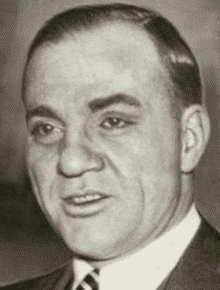
Lazia
c1930 - John Lazia (Born Sept. 28, 1895, at Brooklyn, New York. Killed July 10, 1934, at Kansas City.) Lazia's precise birth date is in some doubt. His birth record has been elusive, and Lazia put different dates on public records. The moment of Brooklyn-born Lazia's arrival in Kansas City is also uncertain, but he was a Kansas City resident by the age of 12 when his family was listed in the 1910 Census. He was running a North Side billiard parlor by the time of his World War I-era draft registration in 1917. During the Prohibition Era, he became the North Side leader of Thomas J. Pendergast's Democratic Machine and involved himself deeply in organized crime, particularly gambling (he already had a prison record dating from his teenage years). He was probably a political ally of Balestrere and DiGiovanni rather than a Mafia boss in his own right. It is said that, in the later Prohibition Era, Lazia brought in Nicolino Impastato from Chicago to serve as his top enforcer.
1932 - Lazia, his wife and aide Charles Gargotta were noted in U.S. immigration records returning from a winter trip to Havana, Cuba.
1934 - In February 1934, Lazia was tried and convicted of misdemeanor failing to file income tax returns. He was acquitted of felony tax evasion charges. He was sentenced to a year in prison, fines of $5,000 and five years of probation. Lazia fought the sentence. A motion for a new trial was defeated in April. In June, a legal appeal was placed on the docket of the U.S. Circuit Court at Omaha. Lazia did not live long enough to attend the appeal hearing. He was shot to death after returning to Kansas City from his summer home at Lake Lotawana. After Lazia's death, Impastato became an important figure in a regional narcotics ring reportedly run by Joseph DeLuca, a lieutenant in the KC Mafia led by Balestrere and DiGiovanni.
Writers of Wrongs: "KC's Lazia is gunned down at his home," (10 July 2018)
Who Was Who: "Lazia, Johnny (1895-1934)."
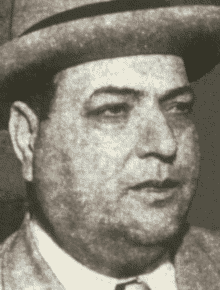
Carollo
1934 - Charles Vincent Carollo (Born Aug. 25, 1902, at Santa Cristina, Palermo, Sicily. Died Sept. 26, 1979, at Kansas City.) Charles "Charlie the Wop" Carollo succeeded Lazia as North Side political boss and as link between the Pendergast Democratic machine and the local Mafia. Like Lazia, Carollo had interests in gambling rackets and experienced trouble with the IRS.
1938 - Carollo's efforts to secure American citizenship failed in 1938. As the Pendergast machine lost much of its influence in the Kansas City region during the end of the Depression Era, Carollo was convicted of committing perjury, evading taxes and defrauding through the mails. He served time in Leavenworth and Alcatraz prisons. When released from prison in 1946, he became a lieutenant for Charles Binaggio and faced deportation by the U.S. government.
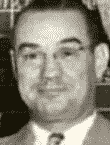
Binaggio
1939 - Charles Binaggio (Born Jan. 12, 1909, at Beaumont, Texas. Killed April 6, 1950, at Kansas City.) With Carollo's federal prosecution, Texas-born Binaggio became the go-between for the Mafia and political powers.
1940s - Federal narcotics agents determined in the 1940s that a branch of the Kansas City Mafia was distributing drugs throughout the U.S. That faction was supplied with narcotics smuggled from Marseille, France, through Havana, Cuba, and then through Tampa, Florida, where the sons of murdered Mafia boss Ignazio Antinori were said to be the operators of a narcotics ring.
1949- Binaggio pushed to make horse race gambling legal in the State of Missouri and may have made some related promises to powerful underworld figures outside of his region. The Missouri governor and a Democratic faction led by Thomas J. Pendergast's nephew James M. Pendergast were among those opposed to legalizing wagering. After a wagering bill failed in the legislature, an angry Binaggio lashed out at his political opponents.
1950 - On April 6, 1950, Binaggio and aide Charles Gargotta were shot to death in a North Side political office. A close ally of Binaggio and Gargotta, Gaetano "Tano" Lococo became an important figure in local gambling rackets.
Writers of Wrongs: "April 6, 1950: Bullets take KC political leader, aide," (6 April 2017)
Rat Trap: "'Joey G' drops a dime and a body or two," (Nov. 2019)
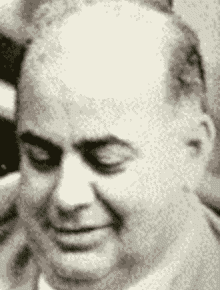
Gizzo
1950 - Anthony R. Gizzo (Born Aug. 4, 1899-1903*, at New York City. Died April 1, 1953, at Dallas, TX.) Binaggio's underworld business partner, Chicago-connected Anthony Gizzo, reportedly made an effort to replace the murdered Binaggio in Kansas City. Gizzo was in poor health and died of heart problems during a visit to Dallas Mafia leader Joseph Civello in the spring of 1953.
[*While Gizzo's birthdate is uniformly reported as August 4, the year of his birth ranges between 1899 (possibly 1898) and 1903. World War I draft registration shows 1899. Gizzo's death certificate shows 1901. Social Security Death Index reports a birth year of 1902. World War II draft registration indicates 1903. Social Security record appears to have erred in subtracting Gizzo's final age of fifty-one from the year of death 1953 (Gizzo had not yet reached his 1953 birthday at the time of his death), producing a record that actually agrees with the death certificate. But the other record differences cannot be resolved.]
Who Was Who: "Gizzo, Anthony (1902-1953)."
1950 - James Balestrere. The old position of political liaison to the Mafia, which had been held by Lazia, Carollo and Binaggio, vanished following the murders of Binaggio and Gargotta. Authorities in the 1950s identified a Kansas City Mafia that was led by Balestrere, Joseph and Peter DiGiovanni, Gaetano "Tano" Lococo and others.
1957 - Joseph Filardo and Joseph Nicholas "Nick" Civella were stopped in a taxi by police on Nov. 14, 1957, near the site of the Apalachin Mafia convention. Though not among the Apalachin meeting attendees rounded up by police, Civella and Filardo were questioned by the authorities and later named in government reports on the convention. Investigators determined that Civella and Filardo left the Barbara estate in Apalachin on foot and then took a taxi to the railroad station in nearby Binghamton, New York, where they were picked up by police. They were the only known Kansas City mobsters linked with the convention. The incident could be looked upon as a changing of the guard in the Kansas City Mafia, with the older generation of bosses giving way to somewhat younger Civella underworld administrators.
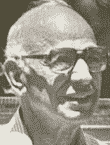
Nick Civella
1959 - Joseph Nicholas Civella (Born March 19, 1912, at Kansas City. Died March 12, 1983, at Kansas City.) As the 1950s came to a close, Balestrere passed away and the DiGiovannis moved into retirement. Joseph Nicholas "Nick" Civella, product of the Filardo-Cusumano Mafia faction, moved into a leadership position. In the 1960s, federal authorities named Thomas "Highway" Simone as his underboss and said that Carl Angelo "Tuffy" DeLuna, related to Civella through marriage, was his top enforcer and heir apparent. The Civella organization included Vito Balestrere, reported to have connections to both KC and Milwaukee underworlds; Nick's brother Carl "Cork" Civella, Carl's son Anthony Thomas "Tony Ripe" Civella and William "Willie Rats" Cammisano.
1978 - Federal wiretaps revealed a years-old conspiracy among crime figures in Kansas City, Milwaukee and Chicago to skim money from gambling casinos in Las Vegas.
1980 - Longtime Kansas City boss "Nick" Civella began a prison sentence for conspiring to bribe a Texas warden. He was sent home in failing health before his sentence was completed.
Who Was Who: "Civella, Nick (1912-1983)."
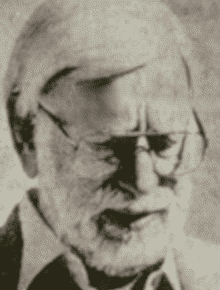
C. Civella
1983 - Carl Civella (Born Jan. 28, 1910, at Kansas City. Died Oct. 2, 1994, at Fort Worth, Texas.) With the death of "Nick" Civella, his brother Carl "Cork" Civella became acting boss of the Kansas City Mafia with Carl "Tuffy" DeLuna acting as underboss. Almost immediately, the new leadership was sent off to prison. Carl Civella, Carl DeLuna and other Kansas City men were convicted of skimming money from the Las Vegas Tropicana Hotel and Casino, just as additional federal indictments were unsealed in the Strawman case. Those indictments charged Civella, DeLuna and others in Kansas City, Chicago, Milwaukee, Cleveland and Las Vegas with conspiring to skim almost $2 million from Stardust and Fremont casinos in Las Vegas. The case resulted in a dozen convictions.
1984 - The beginning of a decades-long imprisonment reportedly made it impossible for Carl Civella to continue to manage the affairs of the Kansas City Crime Family, and caused others to assume control. Carl Civella died in prison in 1994.
Who Was Who: "Civella, Carl 'Cork' (1910-1994)."
1984 - William Cammisano (Born April 26, 1914. Died Jan. 26, 1995, at Kansas City.) Nick and Carl Civella were in prison. The Civella heir-apparent, Anthony "Tony Ripe" Civella, also went off to prison on a racketeering conviction in 1984. That left "Willie Rats" Cammisano, a former aide to Charlie Binaggio and leader of a rival gangland faction, in charge of the Kansas City Mafia. The Cammisano underworld headquarters was said to be the Cammisano commercial garage in the city, 536 Monroe Avenue near Independence Avenue east of downtown. Federal investigators concluded that Cammisano's son, William Jr. (Born May 1949 at Kansas City.) served as underboss and manager of day-to-day operations. There was some suggestion that the elder Cammisano was merely a figurehead concealing the real power wielded by his son. William Jr. denied any association with organized crime.
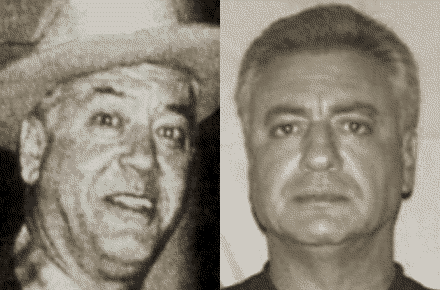
Cammisano Sr., and Jr.
1989 - William "Little Willie" Cammisano Jr. was removed from the Kansas City area following an August 1989 federal conviction for obstruction of justice, related to his alleged attempt to force a woman witness to lie to a federal grand jury.
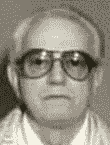
A. Civella
1989 - Anthony Thomas Civella (Born Feb. 17, 1930, at Kansas City. Died Feb. 14, 2006, at Kansas City.) The nephew and son of Mafia bosses, Anthony "Tony Ripe" Civella's rise in the Kansas City underworld may have been held back by a 1970s conviction and prison sentence for overseeing gambling rackets and a 1984 racketeering sentence. His absence appears to have been a factor in the emergence of the Cammisanos as Mafia leaders. Civella emerged from prison close to the time that William Cammisano Jr. entered it. The elder Cammisano, said to be in poor health (he died of lung disease early in 1995 at the age of eighty), reportedly stepped aside, and "Tony Ripe's" long anticipated underworld administration began.
1992 - Anthony Civella was sent to prison after being convicted of a scam involving the discounted purchase and resale of prescription medications. (He was released after four years and died a decade later.) William Cammisano Jr. concluded his stay in prison in that same year.
Who Was Who: "Civella, Anthony 'Ripe Tony' (1930-2006)."